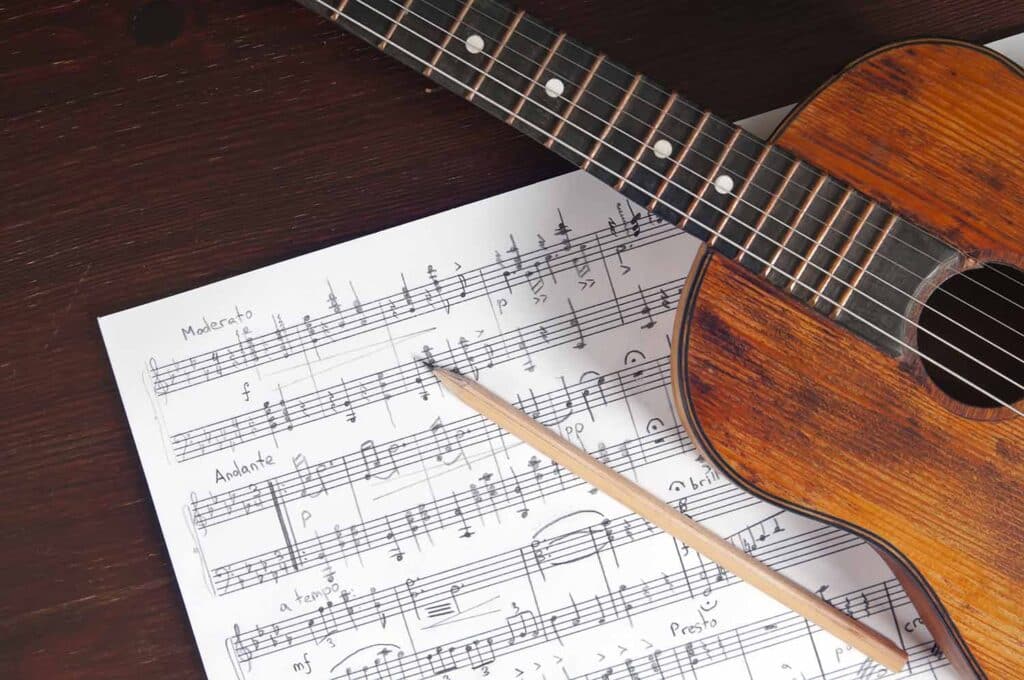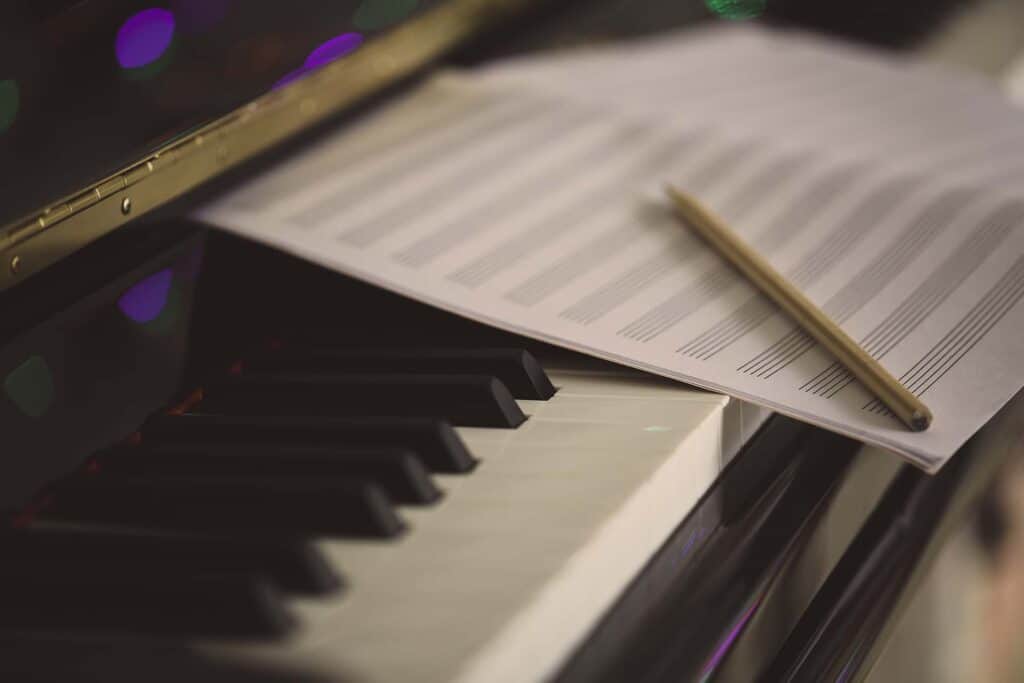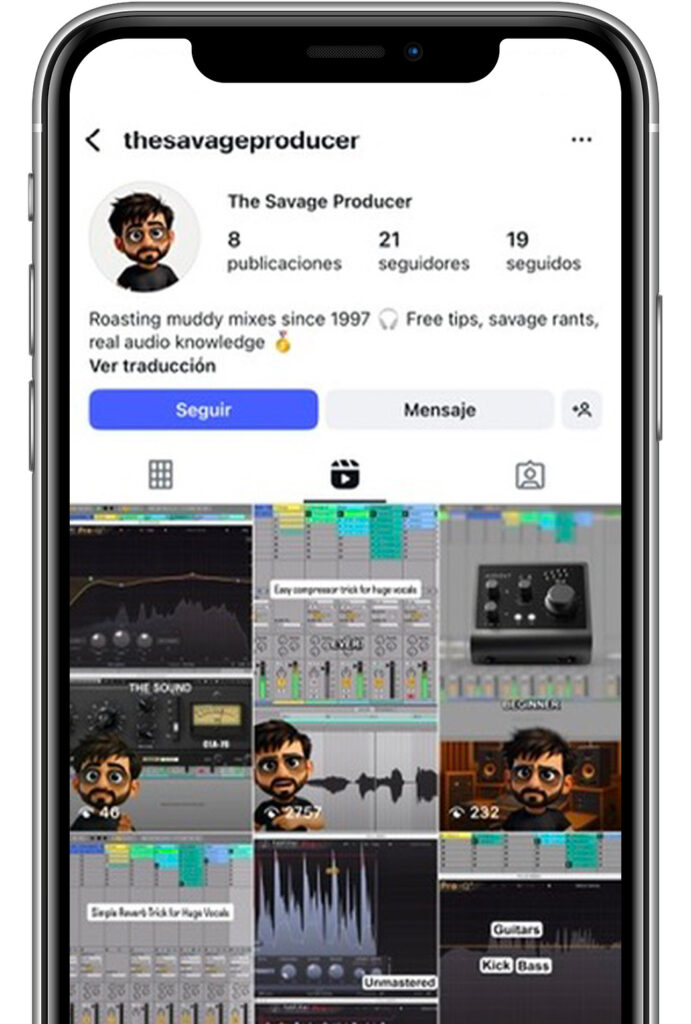We all know how important the melody, harmonies or tempo of a song are and spend a lot of time choosing them, right?
Song structure is just as important, if not more so! In this post, we'll give you tips on how to find the best structure for your song!
Song structure: What is meant by "part of a song"?
A "part" of a song is a particular section of a song that differs from other "parts" or sections of the song. The parts do not necessarily have to differ in harmony. In pop songs this is usually the case (the chorus has different chords than the verse), but in hip-hop songs (new sounds are often added in the chorus, but the chords remain the same) this is not the case.
Tip: Use syncopation and counterpoint in your compositions to make your song more interesting.
The different song structures and build-ups
If you listen to songs of a genre long enough, underneath the uniqueness of each song you recognise certain structures that repeat themselves. Certain "patterns".
These are song structures that are often repeated because they have proven themselves. But there are no rules in music. That means you should orientate yourself on these song structures when composing, but not always necessarily stick to them.
The fact that you use this or that song structure in your song does not guarantee that it will become a hit!

Before we go through the types of song structures, we should name the parts and define what each part is and what purpose it should serve. My intention is to give you a vocabulary to help you identify the sections that exist so that you can shape your songs.
Name and definition of the individual parts
There are 6 basic parts (certainly more in jazz) that are used to structure songs :
- Intro: The intro introduces the song and should build tension in the listener. Meanwhile, many listeners decide in the first few seconds whether they want to listen to the song in a playlist or not, so it is very important to pay attention to it here. Often the intro points to a main riff, so you can already tell the key and tempo of the song (think "Highway to Hell" by AC/DC). But not every song has an intro: some, unfortunately, start with the chorus or verse.
- Verse: This is clearly telling the story of the song. It should give the listener a context and perspective. Here the melody is often in the background and it is only harmonised so that the attention is not taken away from the voice.
- Pre-Chorus (Pre-Chorus): The pre-chorus introduces the chorus and serves to build up a great deal of tension which is released by the chorus. This part of the structure is often ignored because the pre-chorus actually always belongs to the chorus.
- Refrain: The chorus is the culmination of all the big ideas in the song. That is why the title of the song often appears in the chorus. It is a kind of climax and summary of the whole content of the song. The chorus is the climax of the song. The verses and the pre-chorus serve to work towards this one moment; therefore, the chorus should reflect the resolution of the tension.
- Bridge: The bridge usually occurs only once towards the end of the song and represents a change of direction (very often through a change of harmony). The bridge stands out both lyrically and musically. This can be achieved by a change to another relative key (e.g. from D minor to F major) or by a solo.
- Outro: It can take many forms, but it is the last part of the song. Sometimes it's the repeated intro, sometimes it's the chorus played in a stripped down form, or sometimes it's blander conversations. Here you are really free
Common song structures
Okay, now you know what the different parts within the song structure are. Now let's look at the common song structures that are used nowadays (and in the past).

You can always add variations or leave out parts or experiment until you get tired of the length of the sections. The most important thing is that the song is interesting for the listener and that it conveys the idea you want to get across.
Experimentation is part of the game, but it is also advisable to decide on a song structure and stick to it, especially if you are just starting out. Think of it as training: if you train your muscles, you can play better.
Examples of song structures: parts of a pop song
The most common structure of a pop song is:
Intro - Verse - Chorus - Verse - Chorus - Bridge - Chorus - End
And here is the simplified and shorter version (without intro)
Verse - chorus - verse - chorus - bridge - chorus - end
These sections do not necessarily have to have the same number of bars. For example, a verse can be 12 bars long, the chorus only 6, and the bridge again 6.
An infinite number of pop songs have this song structure. So you can be 100% sure that this structure works and is radio-ready!
It's a common structure in hip-hop nowadays:
Chorus - Verse - Chorus - Verse - Chorus - End
This structure aims to "catch" the listener immediately with the chorus. This is important so that people listen longer in a playlist and the algorithm pushes the song forward.
A similar classic song structure is the following:
Verse - Pre-Chorus - Chorus - Verse - Pre-Chorus - Refrain – Refrain - Bridge - Refrain
It simply contains a pre-chorus. It is an extension of the structure described above.
Another very common variant is:
Chorus - Verse - Refrain - Verse - Refrain – Refrain - Bridge - Refrain
As already mentioned, the listener is caught directly with the chorus here and immediately feels the full energy of the song.
The following song structure is the usual 70s/80s rock structure, replacing the bridge with a guitar solo. And yes, AC/DC uses this structure in 95% of their songs!
Verse - Chorus - Verse - Chorus - Instrumental/Solo - Chorus
It is very easy to create different and new song structures by making changes. Experiment and keep the ones that work best for your song.
I myself unconsciously follow these song structures when composing, but not always.

By loading the video, you accept YouTube's privacy policy.
Learn more
A song may work well with one structure for recording in the studio, but benefit from another song structure for live performance (e.g. a chorus twice as long).
Another common and increasingly used structure in EDM music is the following:
Verse - Chorus - Chorus 2 - Verse - Chorus - Chorus 2 - Bridge - Chorus - Chorus 2
I'm cheating a bit, but the idea is that due to the influence of dance music (especially EDM) this structure, which benefits from 2 choruses, is becoming more common. The usual chorus is followed by a second chorus, which can be the same melody with an instrument or a new part.
Conclusion
I always recommend knowing these song structures, but not following them. When you compose music, you will unconsciously develop your own structures, which are ultimately small variations of these common song structures.
But the most important thing is that you write and compose as much as possible without following any rules. Because that's the only way to get better at this game.
















